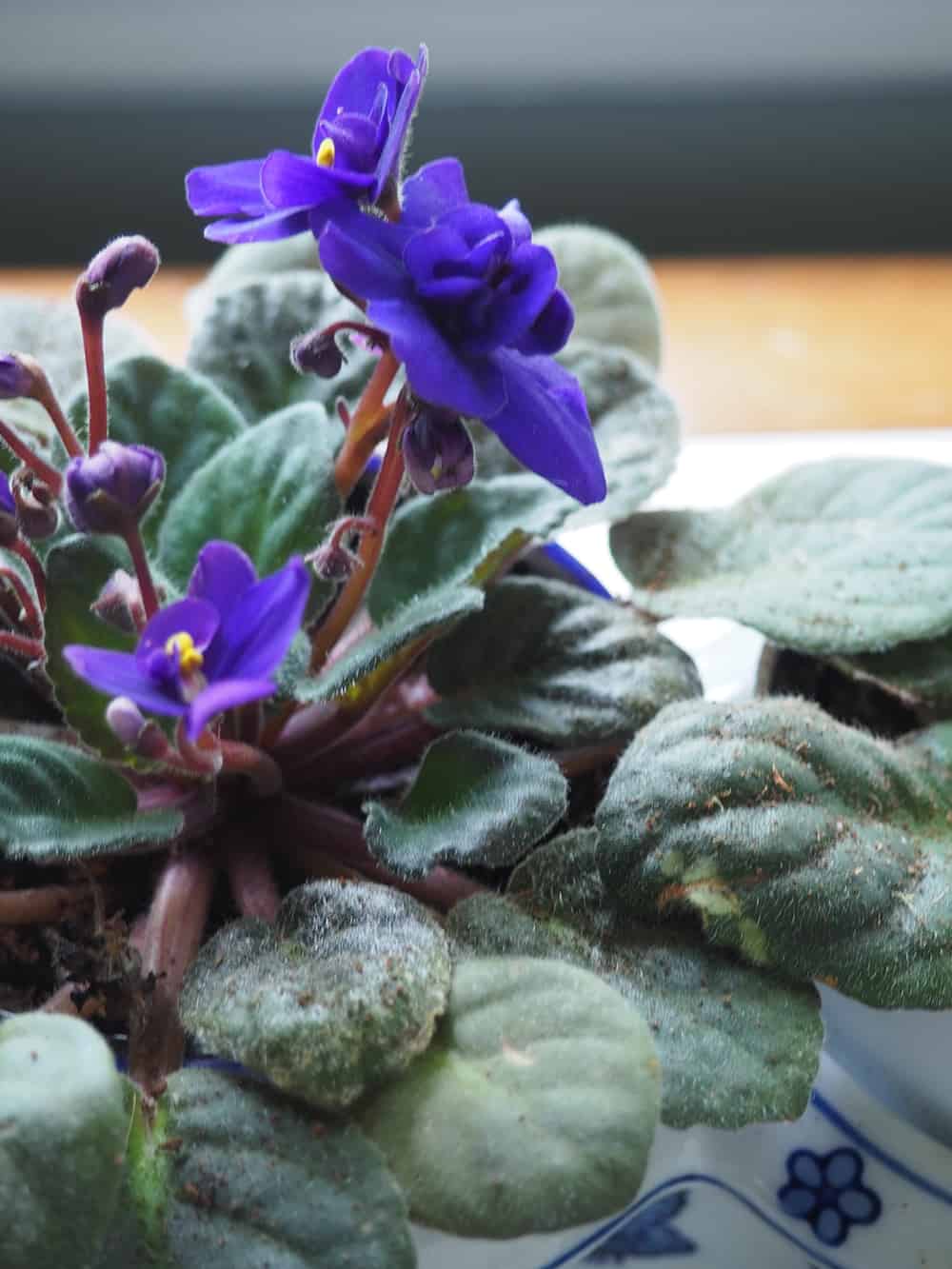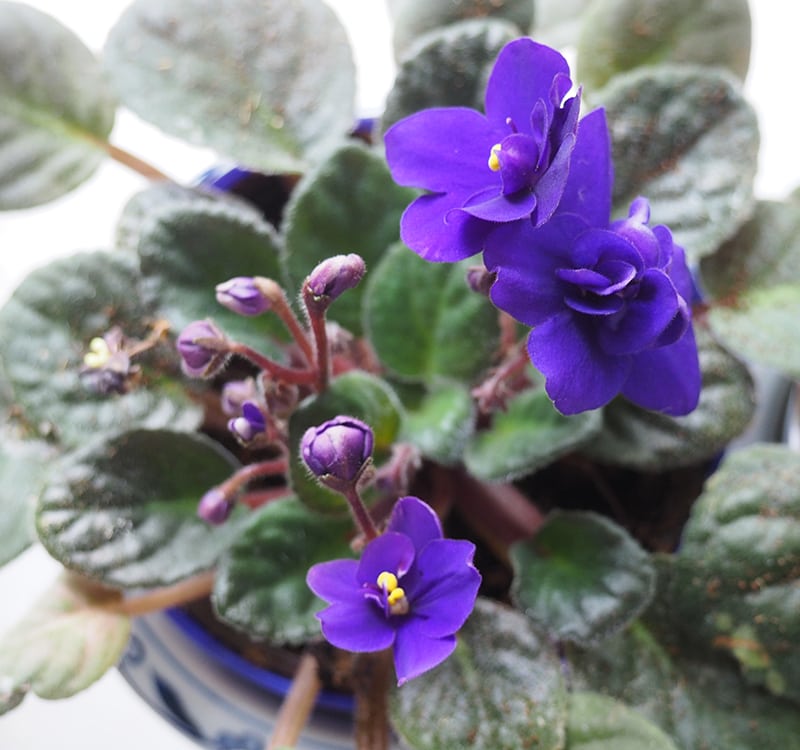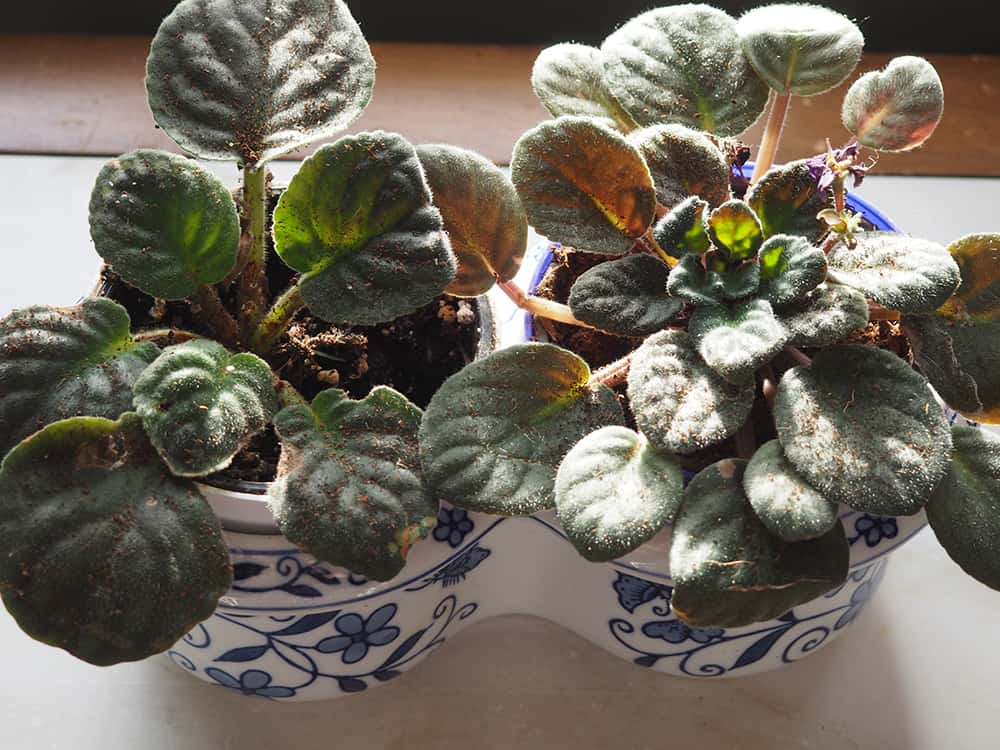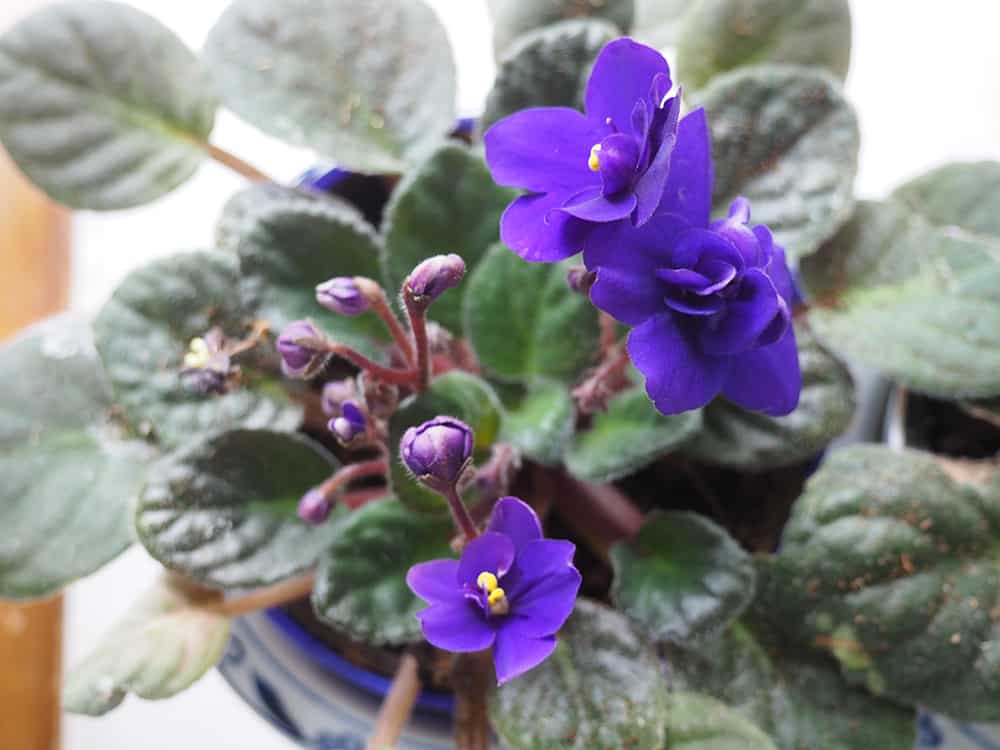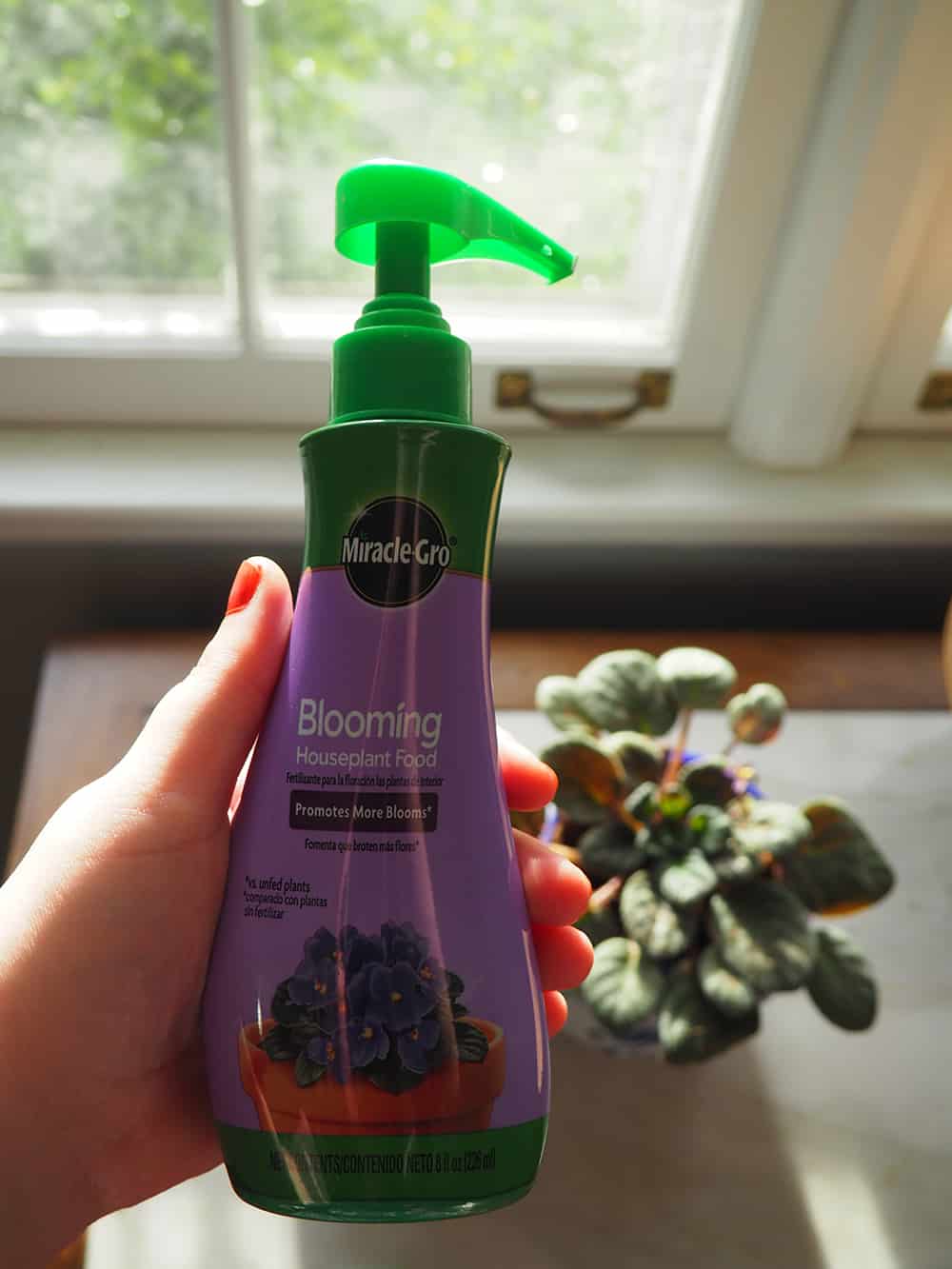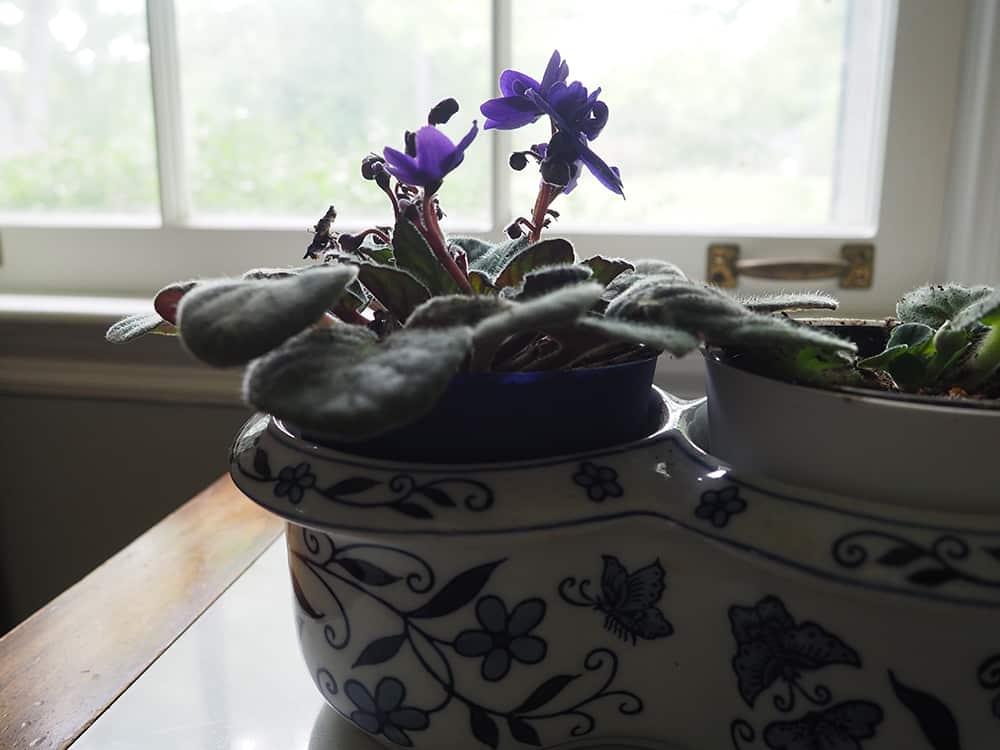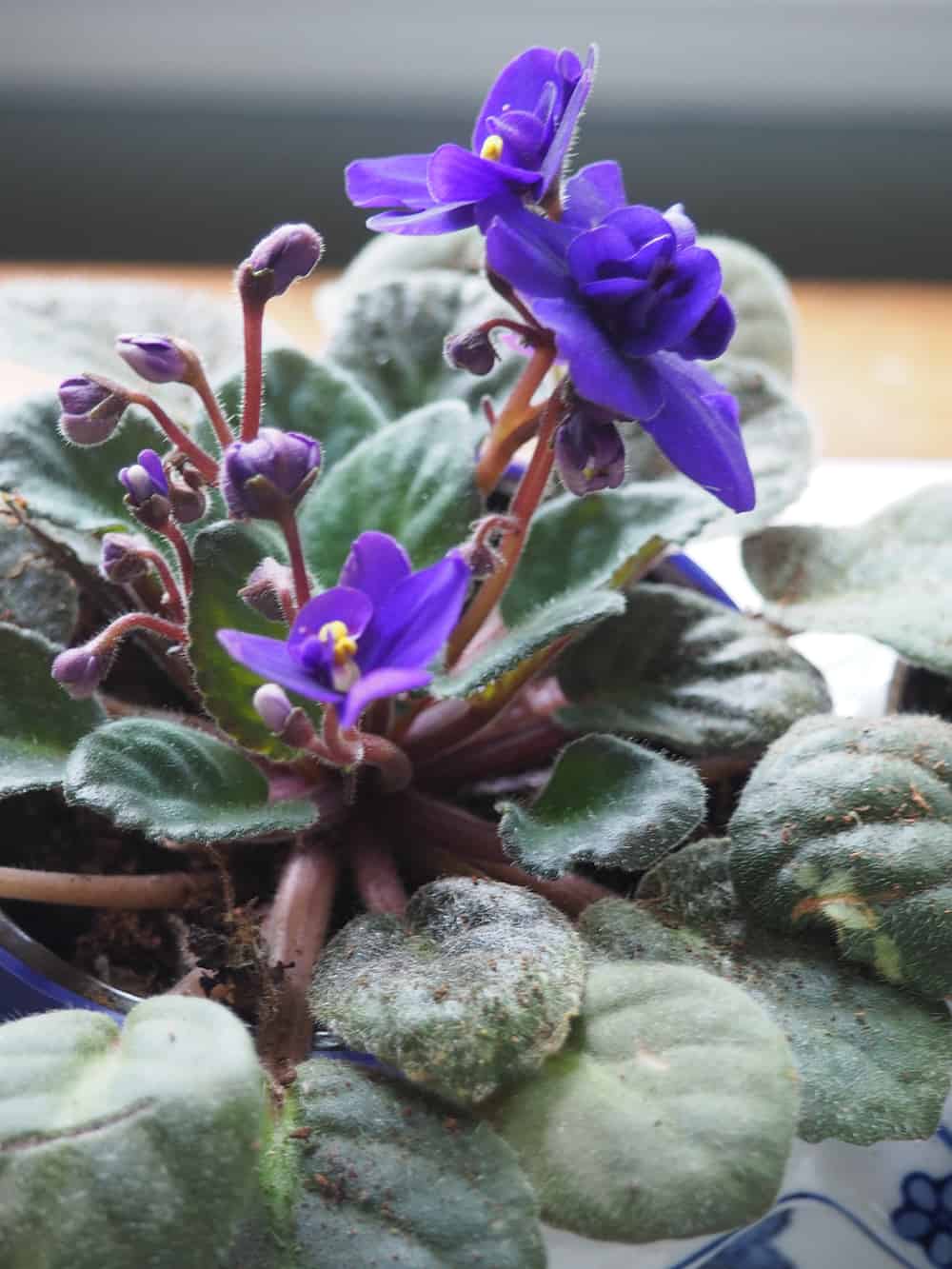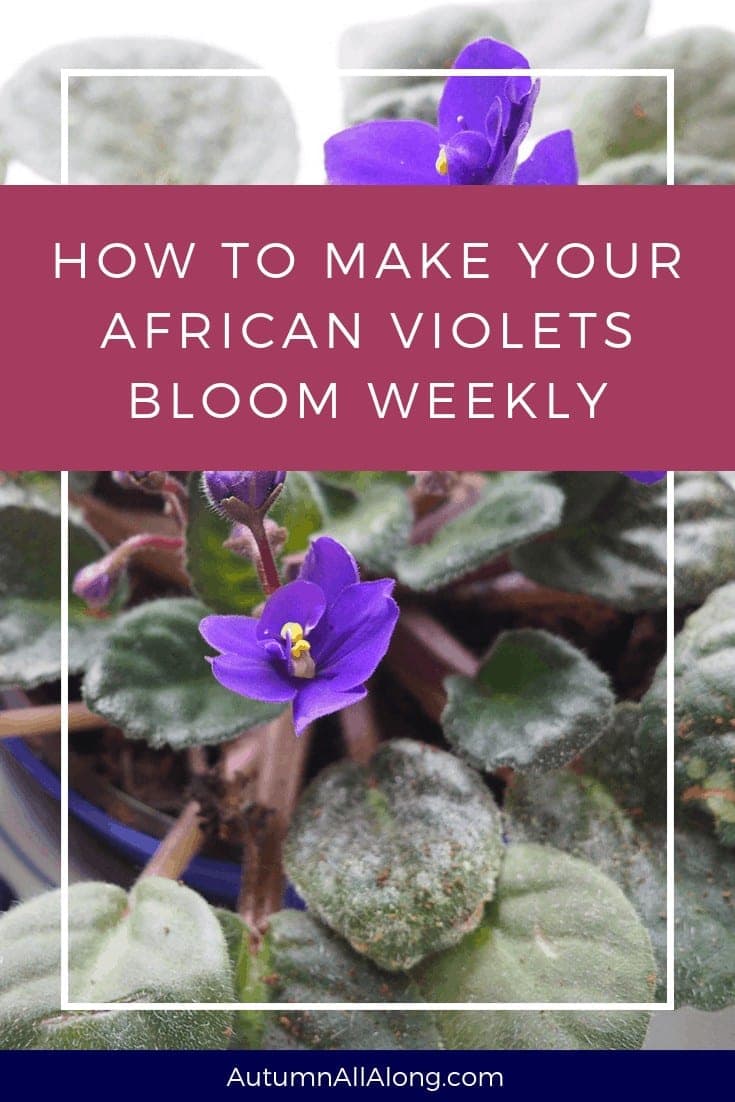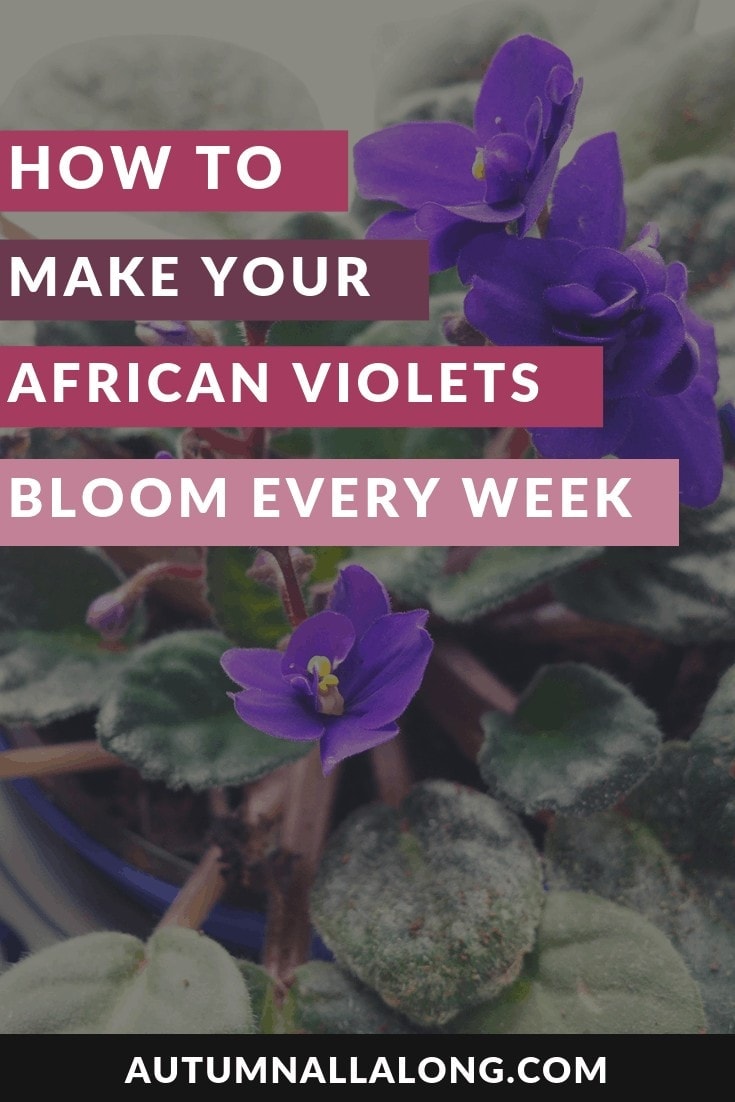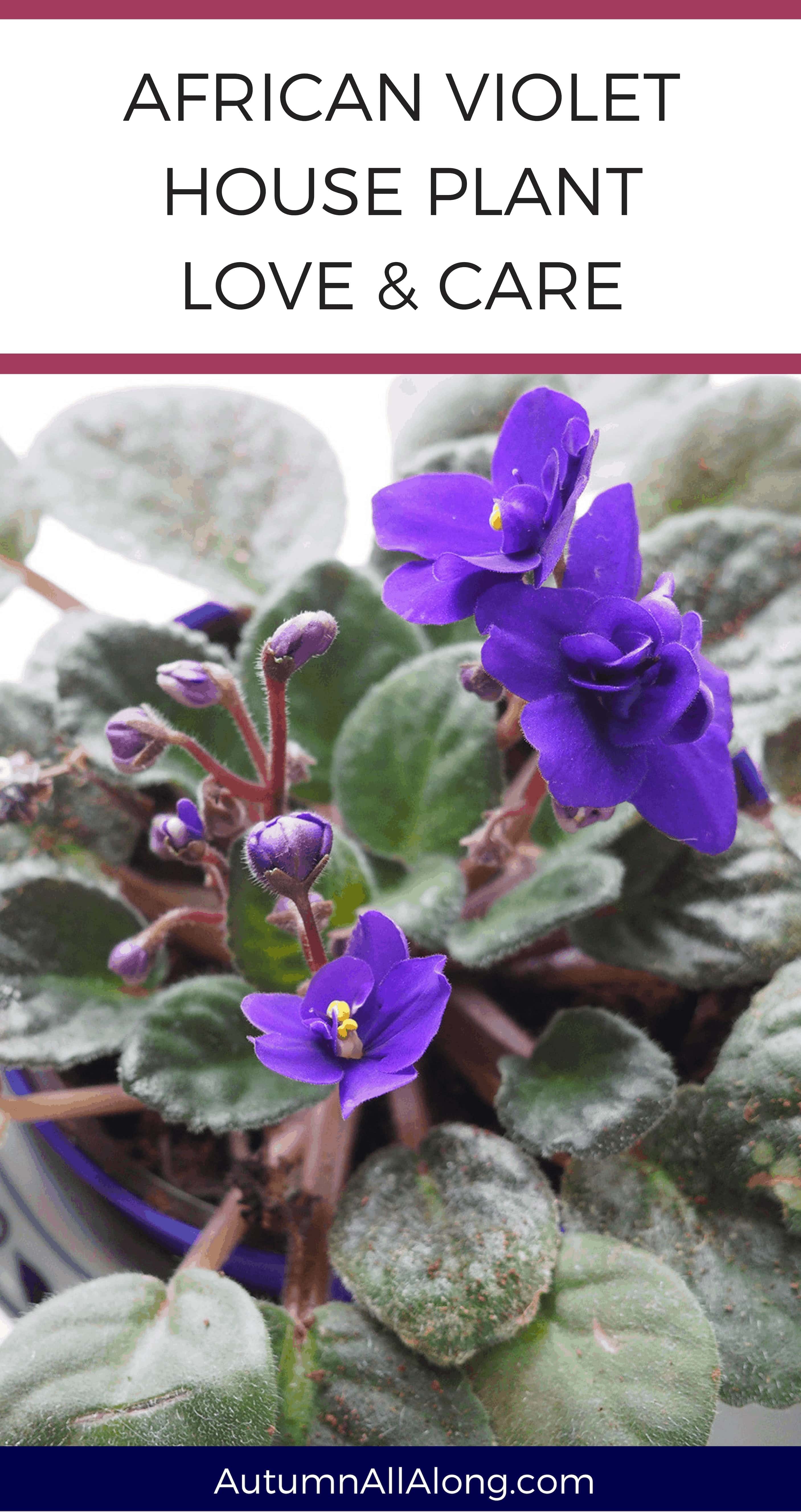I love my house plants and a favorite of mine the past few years have been my African Violets. I’ve been figuring out how to make African violets bloom every week since.
My friendship with this plant started when we had a church plant swap. I realized other people brought small flowers for yards in the plastic containers you throw away and I had purchased this really pretty pot with some African Violets.
I ended up hiding my flowers under my chair and began laughing because this is one of the communication problems that happens sometimes when you are in children’s church helping haha!
When I brought my new flowers home, I spent a lot of time researching how to make your African Violets bloom every week because I found it really rewarding to see them bloom so often.
Unfortunately, I was still in a learning phase though and my poor African Violets died from root rot after almost over two years. I bought some new African Violets, and I have been documenting their growth to be able to share with you how to make your African Violets bloom every week.
This post contains affiliate links that support Autumn All Along.
▲▲▲ Day 1 of my African Violets coming home
▼▼▼ Day 30 of my African Violets being home
Steps to helping your African Violets bloom every week
- When I bring my plants home, I generally repot them. However, for my African Violets, I decided not to because they are easily prone to root rot. I took my plastic pots of African Violets and set them down into my porcelain flower pot so they would not be sitting in water constantly. I added some dirt where it had become sparse and watered my plants with room temperature water. If you do decide to re-pot though, carefully spread the roots of the African Violets if they are bound and make sure you buy a pot that has good drainage/ has pebbles in the bottom. They also make specific African Violet pots (here, here, and here) to help with this.
- I place my African Violets in a window seal with a lot of light and then rotate them about twice a week so they evenly get sun.
- I water my two African Violet plants with a half cup of water each week; I water the plants until the soil is moist, but never saturated. Since they are a hairy-leafed plant, I make sure to avoid the leaves when I am watering. If the water is too cold, you will have leaf spots on your leaves and the leaves will feel very weak. When I first get a plant, I trim off the wilted flowers so it can focus on new growth.
- Once a week, I put a few drops of MiracleGro Blooming Houseplant food into my African Violet pots. While I have achieved weekly blooms without this before, it definitely wasn’t the same amount that I have now!
How to identify why your African Violets aren’t blooming every week
I always take a great sense of pride in taking care of my plants and seeing my African Violets bloom every week! However, while one of my plants has been very fruitful with blooms, I am waiting for my other plant to grow new leaves; while it is growing, I’m not focusing on blooms from it.
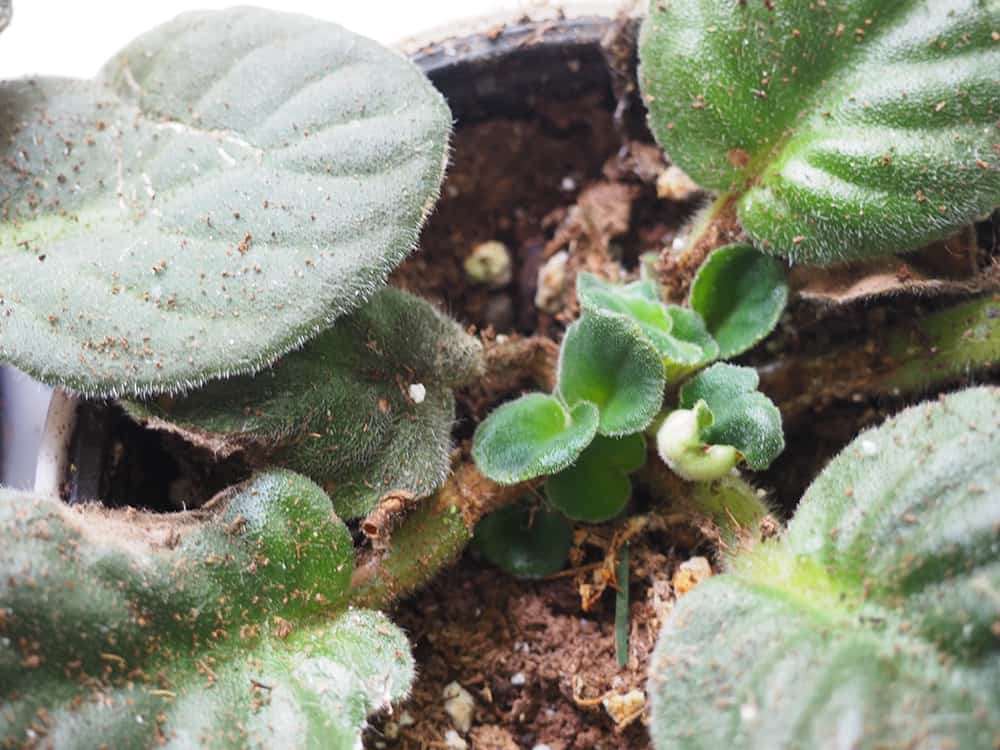
Violet Barn’s website offered the following information that helped fill in some of the growing gaps for me:
Given the proper care and conditions, African violets can bloom nearly constantly. If your plant is producing new, healthy, leaves, but no blooms, the likely causes are either insufficient light and/or excess crowns or suckeres. Properly grown, unless this is a species or trailing variety, your violet should have only one “crown” or growing point–the place from which new leaves are formed.
It should also not have any “suckers”. These are the beginning of small crowns, new growth that will appear as small pairs of leaves, along the stem in the leaf axils. This is where flower buds could be forming, but won’t if your plant is busy producing suckers at those points.
You don’t need a lot of leaves to produce bloom. Like most plants, African violets produce bloom from the new growth, generally the first (youngest) three rows of leaves. This means that more than 4 or 5 rows, or 12-15 leaves, is unnecessary. Limiting foliage grown will encourage blossom production (the plant will have no choice).
While over watering can be another issue with violets that I have mentioned above in plant care, lighting can also be an issue. African Violets need as much bright light as possible, but they also need to be away from really hot sunlight.
